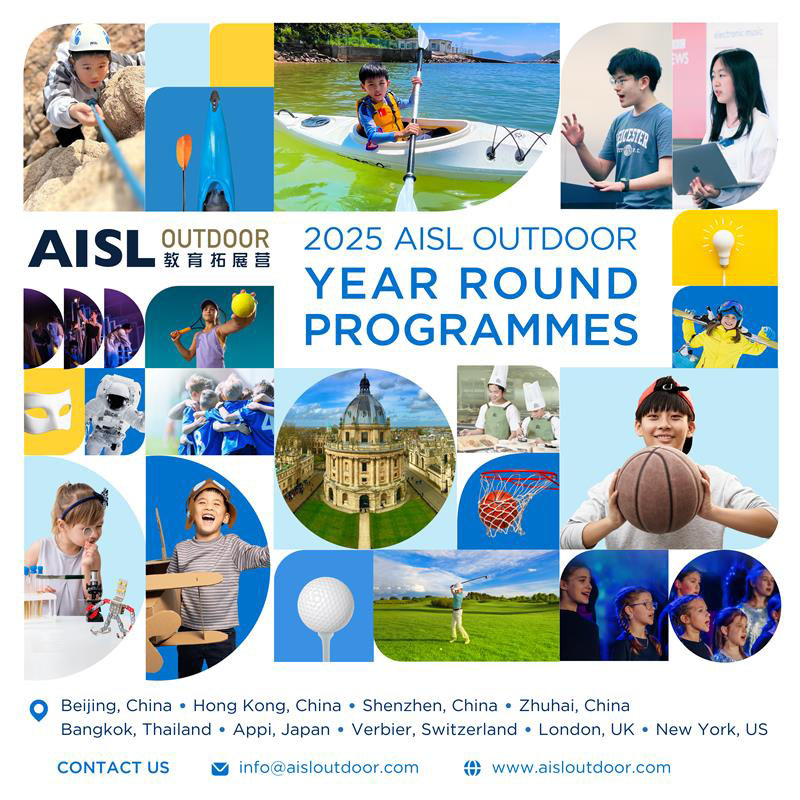Choosing school subjects can feel like a daunting task, for students and their families alike. As middle and high school timetables begin to offer more freedom, many parents find themselves wondering how best to support these academic decisions. Should students follow their passions, prioritise academic strengths, or consider what looks best for future university applications? The stakes can feel high, but this stage is also an important opportunity to help young people develop their sense of self, explore areas of curiosity, and make thoughtful choices with increasing independence.
This article offers a practical guide for parents navigating subject selection alongside their children. You’ll find strategies to balance interest and ability, guidance on how subject choices may affect longer-term opportunities, and tips for keeping conversations productive, not pressured. Whether your child is confident or uncertain, this process can be a valuable stepping stone towards lifelong decision-making skills and a clearer understanding of what they enjoy and excel at.
Understanding the Subject Selection Landscape
The process of choosing school subjects looks different depending on the school system and year level. In middle school, students are often introduced to a broader range of disciplines, allowing them to experience new areas before specialisation begins. As they enter high school, subject options typically become more structured and linked to pathways such as the IB, A-Levels, or national qualifications. This is when choices can start to influence university eligibility or career directions.
Many schools group subjects into categories, such as languages, sciences, humanities, and the arts, then require students to select a combination. Some may also offer electives or interdisciplinary courses that allow students to tailor their education. Understanding what’s compulsory, what’s optional, and how subjects build over time can help families make informed decisions. For example, students considering engineering will need to maintain a strong foundation in mathematics and science, while those interested in design or architecture may benefit from art and technology courses early on. Reviewing school subject handbooks together is a simple but powerful way to start these conversations with clarity.
Balancing Interests, Strengths, and Future Plans
Choosing the right subjects is often a blend of what a student enjoys, where they excel, and what might serve them in the years ahead. While some students have clear long-term goals, many are still discovering their strengths. That’s perfectly normal, especially during the middle and early high school years.
Rather than focusing only on possible future careers and “what do you want to be?”, families can shift the conversation to “what do you enjoy learning?” or “what comes naturally to you?” A student who thrives in language classes may later explore careers in law, journalism, or diplomacy, even if they haven’t considered these options yet. Similarly, a student drawn to creative subjects may develop transferable skills in communication, collaboration, and critical thinking, which are valued in many professions.
Parents can support this process by:
- Encouraging experimentation in earlier years to broaden exposure
- Noticing patterns in their child’s motivation and effort across different subjects
- Keeping career conversations open-ended, especially before Year 10
- Helping students see how different subjects support varied pathways, not just specific jobs
The aim is to maintain flexibility while still helping students feel confident in the choices they make. A balanced subject portfolio can open more doors and reduce pressure as plans evolve.
Managing Parental Expectations and Student Autonomy
It’s natural for parents to have hopes about the subjects their children will take, particularly if they’re thinking about future university options or aligning with family career paths. However, it’s equally important to recognise that students thrive when they feel a sense of ownership over their choices.
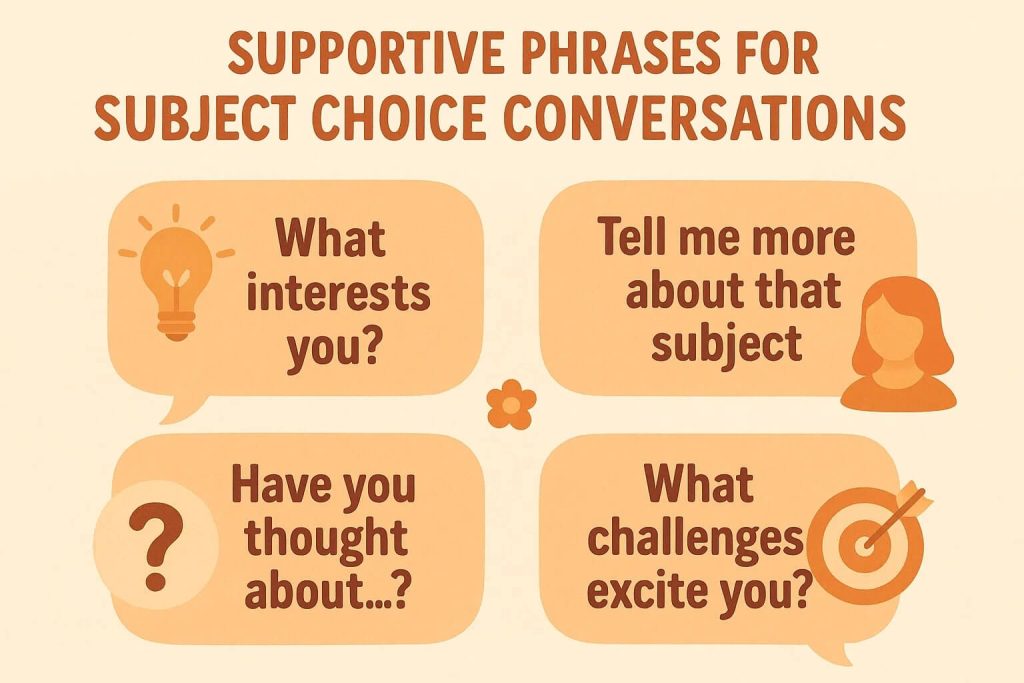
Pushing a student towards a subject purely because it’s “safe” or “useful” can lead to disengagement or added stress. Instead, the goal is to support students in making informed decisions that reflect both their abilities and aspirations. This doesn’t mean stepping back entirely. It means co-piloting rather than driving.
Here’s how families can strike that balance:
Start by listening. Ask your child how they feel about different subjects, not just how they’re performing in them.
Share your perspective. Frame your suggestions as insights rather than instructions: “Have you thought about…?” instead of “You should take…”
Be mindful of comparison. Avoid linking subject choices to siblings, peers, or your own experiences at school. Each student’s path is unique.
Use school resources. Counsellors, teachers, and subject coordinators can provide helpful overviews of what different courses involve. Attending open evenings or curriculum briefings together can turn it into a shared exploration.
Balancing Strengths, Interests, and Future Possibilities
Choosing subjects is about finding the intersection between what a student enjoys, what they’re good at, and what might support future opportunities. Helping students navigate that balance is one of the most valuable roles a parent can play.
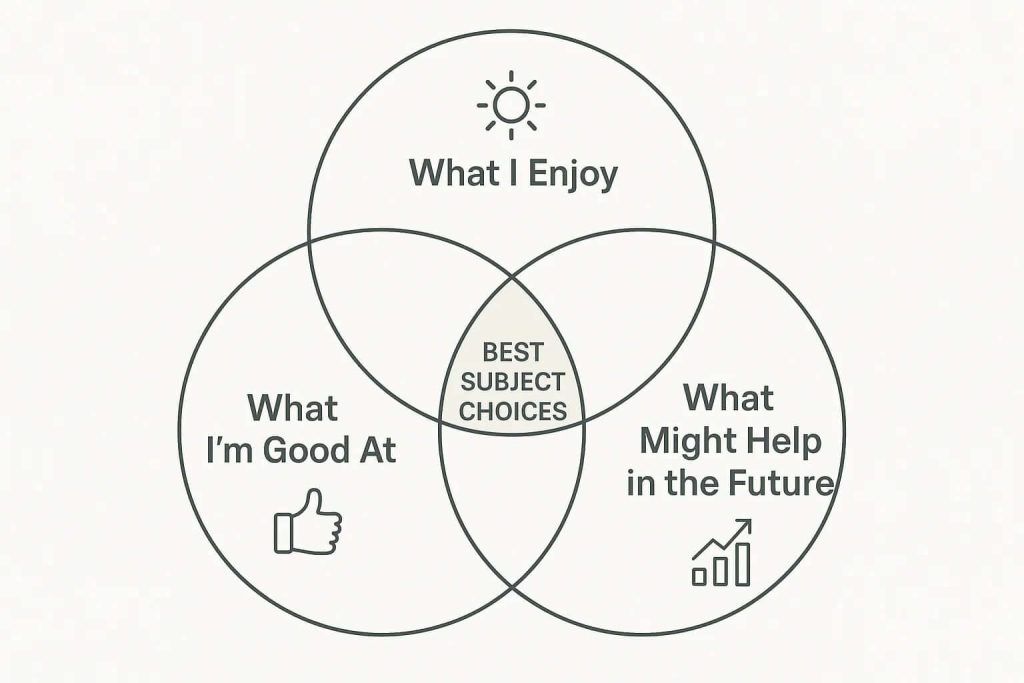
Recognising Patterns and Preferences
Start by reflecting together on the subjects your child naturally gravitates towards. Which lessons spark the most excitement? Where do they feel confident or curious? A student who lights up in design or science may not have a clear career goal yet, but those consistent interests can point to broader pathways like architecture, health sciences, or engineering.
Playing to Strengths (Without Getting Stuck)
Academic success can influence confidence, but it’s important not to lean too heavily on grades alone. A student may achieve high marks in a subject they don’t enjoy, or struggle with one they love. Encourage effort and engagement over perfection. Remind them that secondary school is a place to explore, not specialise entirely.
Looking Ahead (Without Rushing)
At this stage, students don’t need a 10-year plan. What they do need is awareness of how subject choices can keep doors open. For example, if a student is even slightly interested in studying medicine or science-related fields, it’s worth considering biology and chemistry. Similarly, keeping a strong language or humanities subject alongside STEM can broaden university options.
What Role Should Parents Play?
When it comes to subject selection, many parents wonder just how involved they should be. The goal is to guide without directing, encourage without pressuring. It’s about walking alongside, not leading the journey.
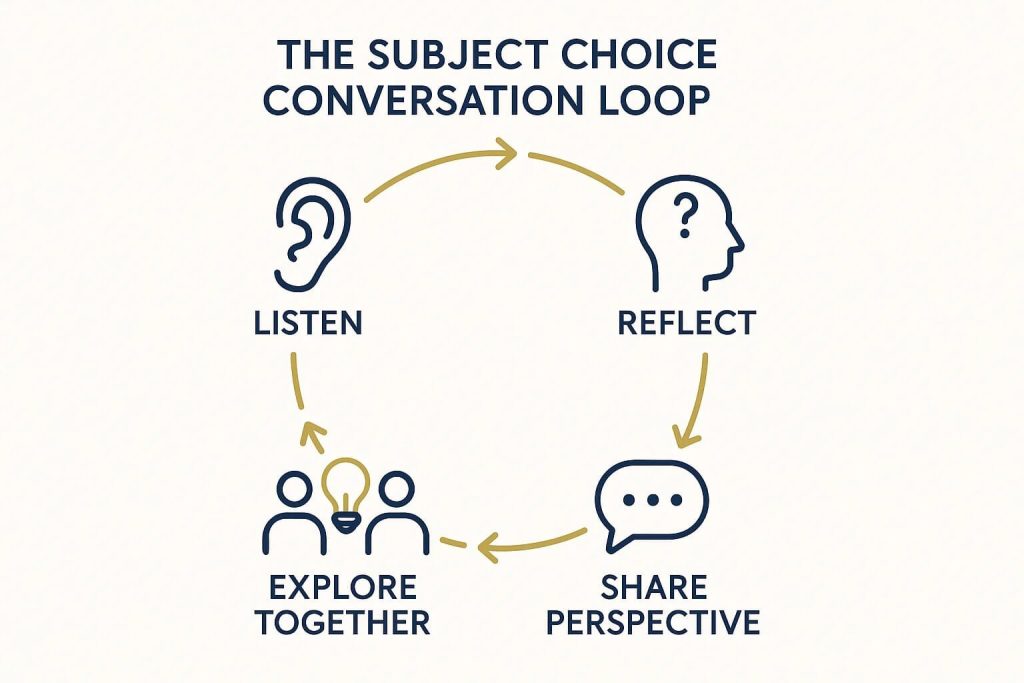
Active Listening Over Immediate Advice
Instead of jumping in with suggestions, start by asking open-ended questions. What subjects feel meaningful to them? Which ones challenge them in a good way? This invites students to articulate their thoughts and reflect out loud, sometimes even surprising themselves in the process. It also gives you insight into their mindset without framing the conversation as a checklist or decision deadline.
Offering Perspective, Not Pressure
You bring something powerful to the table: life experience. While your child might not yet grasp how certain subjects link to careers or global issues, you can help connect those dots. For instance, explaining how communication skills shaped your own work life, or how analytical thinking applies across industries, can offer helpful perspective. Just be mindful to keep the tone supportive, rather than persuasive.
Navigating Disagreements Calmly
If your child’s choices feel unrealistic or don’t align with your expectations, aim to stay curious rather than confrontational. Ask why a particular subject excites them or what they imagine doing with it. Often, the reasoning is more thoughtful than it first appears. Keeping these discussions open and ongoing will foster trust and signal that their voice truly matters.
Supporting Confident, Informed Subject Choices
Choosing subjects in middle and high school is a key moment of personal growth. With the right mix of encouragement, reflection, and support, parents can help their children navigate these choices with clarity and confidence. It’s all about nurturing interests, building self-awareness, and staying open to change, rather than finding the “perfect” path.
For more insights on guiding your child’s learning journey, visit AISL Mall.
Curriculum and Guides that may be of interest:
Get a special discount by quoting code AISLMALL during CHECKOUT.
3Education: StoryTellAR
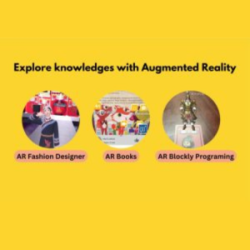
StoryTellAR is an online and remote platform designed specifically to connect offline materials seamlessly with interactive digital content, using Computer Vision (Augmented Reality). With a user-friendly user interface, curators can use their mobile phone to associate audio recordings, videos and other digital interactions such as audio, AR video plane and URL to any artworks. The corresponding digital content customized by their very own creators will pop up, making the book seamless, personalized and effective.
AlGreen: E-book

AlGreen is at the forefront of developing microalgae technology for air purification and carbon capture, driving a sustainable future. AlGreen’s ebook introduces young learners to biology’s wonders and its role in sustainability. Covering cellular and plant biology, climate science, and future biotech like carbon capture and renewable energy, it inspires environmental stewardship and a passion for protecting our planet.
Chinese 1-2-Tree: Leveled Reading Platform For Pre-k To Grade 8
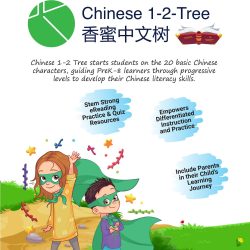
Chinese 1-2-Tree is a unique leveled reading interactive learning platform designed to provide progressive leveled reading starting with 20 basic characters. Chinese 1-2-Tree offers literacy essentials for every PreK-8 Chinese classroom. We offer a complete solution for reading instruction and student practice, perfect for use in class and at home. Rely on our easy-to-use resources to build foundational skills and strengthen reading comprehension.
Codementum: Gamified Coding Training Platform and Coding Curriculum
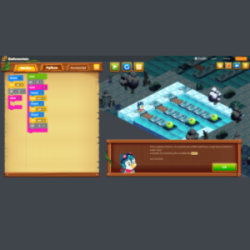
Codementum offers a fun, interactive platform to teach kids coding through block-based and text-based languages like Python and JavaScript. Kids learn to create mobile games, apps, and AI projects at their own pace, with gamified courses, self-guided challenges, and resources for all experience levels.
NovaAcademy: Ready-to-Go Curriculum Sets
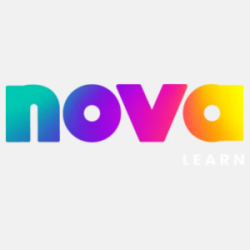
Novalearn Limited is an EdTech company transforming education by seamlessly integrating machine learning, studio-produced edutainment, and quality STEAM education aligned with international K-12 curricula. All the teaching resources you need for fun and enriching classes, created by the NovaLearn team of experienced educators and industry experts. Each curriculum set includes Project lesson plans, Engaging videos, Interactive activity sheets and Skill-building exercises
Oxford University Press Cambridge IGCSE/O Level/AS & A Level Exam Success Revision Guides
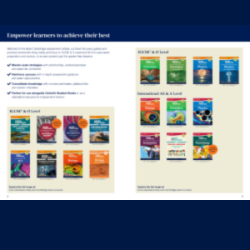
Oxford University Press is a department of the University of Oxford. It furthers the University’s objective of excellence in research, scholarship, and education by publishing worldwide. Cambridge Exam Success Guides from Oxford University Press provide unique exam support and revision guidance for Cambridge IGCSE & O Level and AS & A Level students. Matched to the latest Cambridge assessment criteria. Perfect for use alongside Oxford Resources for Cambridge Student Books or as a standalone resource for independent revision.
SAM Labs: STEAM Pathway Schoolwide Annual Subscription
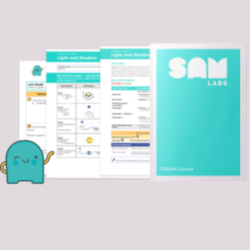
SAM Labs, an award-winning EdTech company, empowers over 9,000 schools in 60+ countries with innovative Coding and STEAM tools. Students create projects like smart city lighting and solar habitats while meeting curriculum standards, inspiring problem-solving and fostering teacher creativity.






